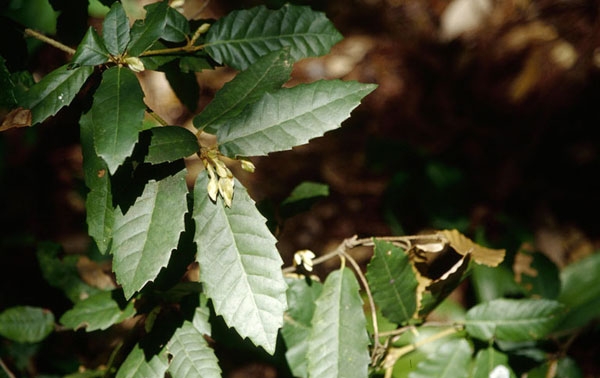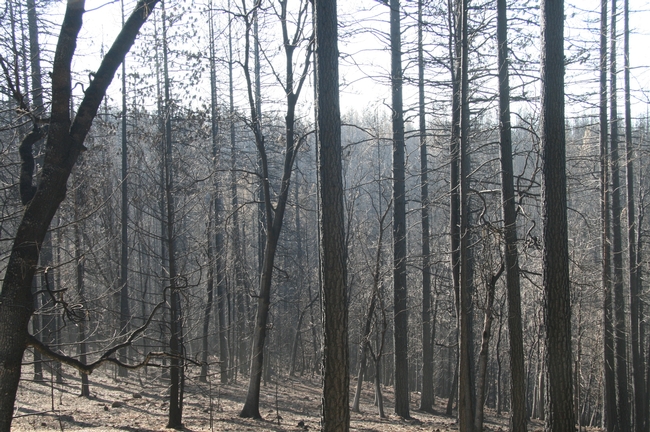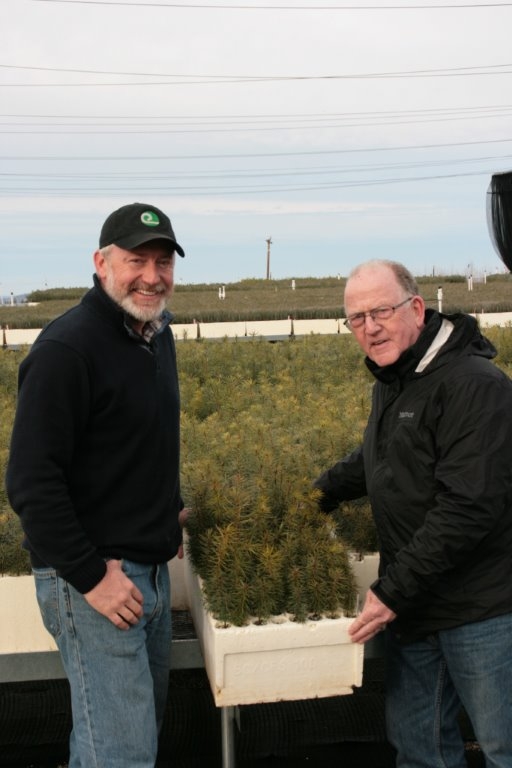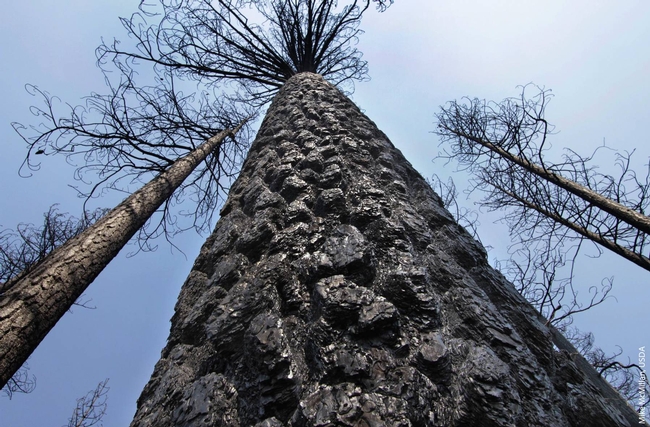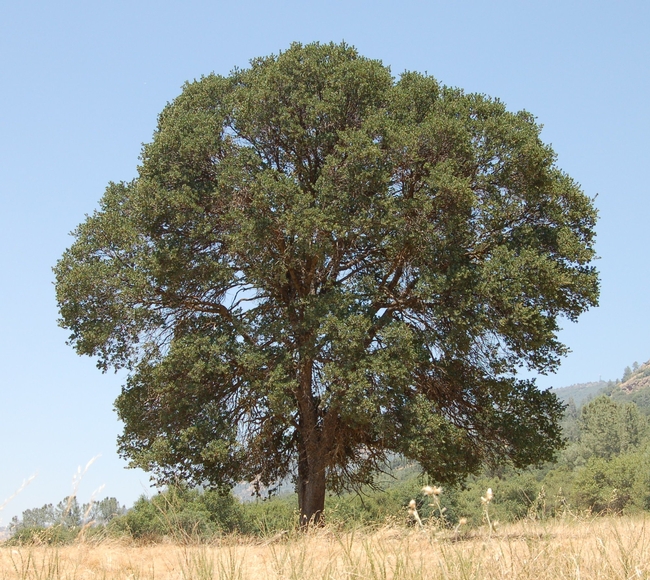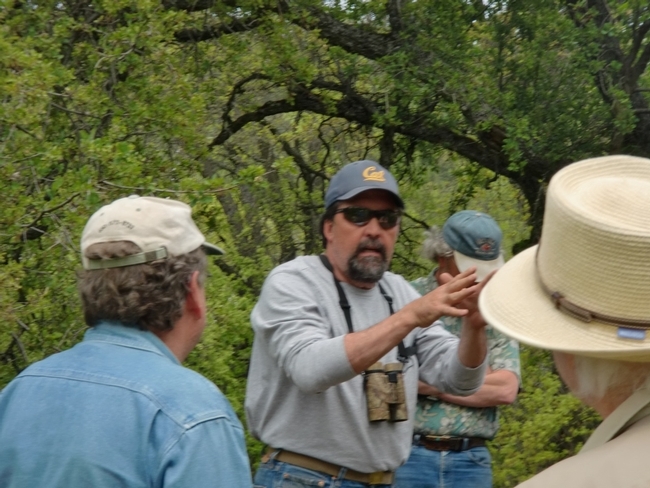Posts Tagged: Greg Giusti
Tanoak is an 'artisanal' product with ecological value
In June, Mendocino County voters approved Measure V, which limits the practice of poisoning unwanted hardwood trees like tanoaks. The hardwood tree treatment has been used by forest land managers to make way for more valuable conifers. UC Cooperative Extension advisor Greg Giusti said tanoaks are "a difficult beast to manage," reported Sarah Reith in Willits News.
The time when tanoaks were a profitable resource ended with the advent of automobiles, reducing the need to tan leather for horse tack. An effort to harvest and use tanoaks in the late 1990s "died on the vine," Giusti said, because of market domination by hardwoods from the East.
While tanoak doesn't have commercial appeal, it can be a fine material for boutique or artisanal woodworking.
As an ecologist, Giusti noted that “tanoak plays an important role in forests,” providing habitat and high-nutrient acorns for wildlife.
"The thought of losing tanoak completely is not a positive thing,” he said
Lake County plants 100,000 seeds to reforest area destroyed by Valley Fire
Lake County community groups have raised nearly $60,000 to reforest the areas ravaged by last September's Valley Fire. The funds have allowed the greenhouse planting of 100,000 native conifer seedlings that will be ready for distribution in time for the winter 2016 planting season. The Valley Fire, which started in Cobb on Sept. 12, burned more than 76,000 acres.
In October, Greg Giusti, UC ANR Cooperative Extension director and forestry advisor in Lake County, and Korinn Woodard, district conservationist with the Natural Resources Conservation District (NRCS), began to estimate the numbers of seeds needed for the first year of planting.
Two local entities have provided funds to jumpstart the much-needed reforestation in the areas affected by fire. #LakeCountyRising is a collaborative fundraising effort of the Lake County Winegrape Commission, Lake County Winery Association and Lake County Wine Alliance. The Lake Area Rotary Club Association (LARCA) is a nonprofit foundation that comprises the four Rotary Clubs in Lake County – Lakeport, Middletown, Clearlake and Kelseyville. Together they have allocated the nearly $60,000 to the East Lake Resource Conservation District (RCD) to get the seedlings planted and the program in place.
By collaborating with the El Dorado/Georgetown Divide RCD's established native-plant seed collection and propagation program, the funds have resulted in the greenhouse planting of 100,000 native conifers – mostly ponderosa pine, but also some Douglas fir and sugar pine. The species available are suitable for higher elevation burned areas such as Cobb Mountain.
“Getting our forest lands replanted as soon as possible is a cornerstone in the healing process of the spirit of these communities,” said Andy Peterson, chair of the LARCA Fire Relief Committee. “The LARCA Fire Relief Committee identified that as a top priority from day one and we are extremely pleased to be partnering with these other agencies to get that done.”
#LakeCountyRising representatives were interested in helping to support the effort, but any donation would need to go to an established organization responsible for the program. At the same time, LARCA had also identified funding for reforestation efforts as a major priority.
“An experienced agency was needed to lead this effort, and our board agreed that we had the experience and resources to make it happen, if funds were available,” said Charlotte Griswold, East Lake RCD president.
This is where #LakeCountyRising and LARCA stepped up to the plate. Timing was of the essence, as seeds would need to be purchased in time for winter planting in order to have seedling stock available by late 2016.
“It was evident there was urgency, so we presented it to our steering committee and they wholeheartedly supported it,” said Debra Sommerfield, president of the Lake County Winegrape Commission, one of the three organizations involved in the #LakeCountyRising fundraising effort.
“The intention is to make conifer seedlings available for planting each winter for the next few years at a pace that will align with the community rebuilding process and demand,” Griswold said. “We expect to work with NRCS to start taking advance orders before the end of April and to partner with the ag and natural resources programs at area high schools to organize several community planting projects.”
Burned forestland needs erosion protection
“The loosened soil and ash can move quickly under proper storm conditions,” said Greg Giusti, a UC ANR Cooperative Extension forestry advisor. “Property owners should take immediate action.”
A longstanding practice in the West has been spreading grass seed after a fire, however, the seed is slow to germinate and grow during the cold months that follow fire season.
“Seeding is generally ineffective,” Giusti said. “The seed simply moves and erodes with the soil and ash following an initial rain event.”
After losing a home, homeowners may feel the need to clean up their property. However, leaving woody debris, downed trees and limbs will arrest soil movement. Stumps and standing dead trees also help protect the soil.
“The roots are still in the soil and will help hold it in place,” Giusti said. “As long as they don't pose a danger, trees should be left in place.”
Spreading rice straw or weed-free hay on the ground is another way to protect the soil from erosion. Whole bales of hay can be placed in natural drainages to slow water movement and reduce erosion. Straw wattles – long tubes of compressed straw encased in jute or another material – may be laid out across a slope and secured with stakes.
“I suggest landowners focus on areas of their property where they can have the greatest positive effect,” Giusti said. “You can't cover a whole hillside with straw. People can only do what they can do.”
An initiative to maintain and enhance sustainable natural ecosystems is part of UC Agriculture and Natural Resources Strategic Vision 2025.
Give oaks water once a month
Even though California's majestic oak trees are generally considered drought tolerant, the last four years of well-below-average rainfall are taking a toll, reported the Sierra Sun Times.
"In some parts of the state, oaks are being deprived of water for as long as nine months, creating extreme water stress," said Greg Giusti, a forest and wildlands advisor for UC Agriculture and Natural Resources. Giusti is headquartered in the UC ANR Cooperative Extension office in Mendocino County.
Giusti and Kris Randal, the UC Master Gardener coordinator for Mariposa County, suggest that California residents with oaks on their property give the trees a good soaking once a month during the summer.
The water should be applied around the drip line - the area below the outstretched branches - but not near the trunk. A permeable soaker hose is an ideal tool for slow application over the wide area. Allow the water to run until it has soaked down to a depth of 12 to 18 inches, which can be detected with a long probe such as a screwdriver. "If it comes up with signs of moisture at the tip, you're good," the article says.
Randal said it is important to let the soil dry out completely between waterings, because oaks are susceptible to root fungus that can grow in warm, damp soil.
Even if water is unavailable and the leaves begin to turn brown or fall, the experts suggest waiting for spring before considering removing the tree.
"If you tree leafs out, it's still alive," Randall said. "And in this drought, give it extra time to leaf out."
Rocky Fire is raging through bone dry chaparral shrublands
Northern California's Rocky Fire is roaring through shrublands that have no previous recorded history of wildfires, reported Kirk Siegler on All Things Considered. It has already burned 65,000 acres and is 12 percent contained, according to CalFire's Incident Report.
The area has been protected from fire for decades, primed for the type of catastrophic blaze California officials have been predicting.
Siegler spoke to UC Agriculture and Natural Resources Cooperative Extension wildland and forestry advisor Greg Giusti.
"We've got miles and miles of contiguous chaparral vegetation and literally there are no breaks in the vegetation," Giusti said. "It's extremely steep and, in many cases, it's a roadless area."
Four years of drought has left the vegetation bone dry.
'When these fires get to an intensity we've seen, because of the fuel loading, because of fire suppression for the last 50 or 60 years, it allows the plant communities to get so dense, so thick and so expansive that, once a fire starts, it's beyond the capabilities of human control," Guisti said.


